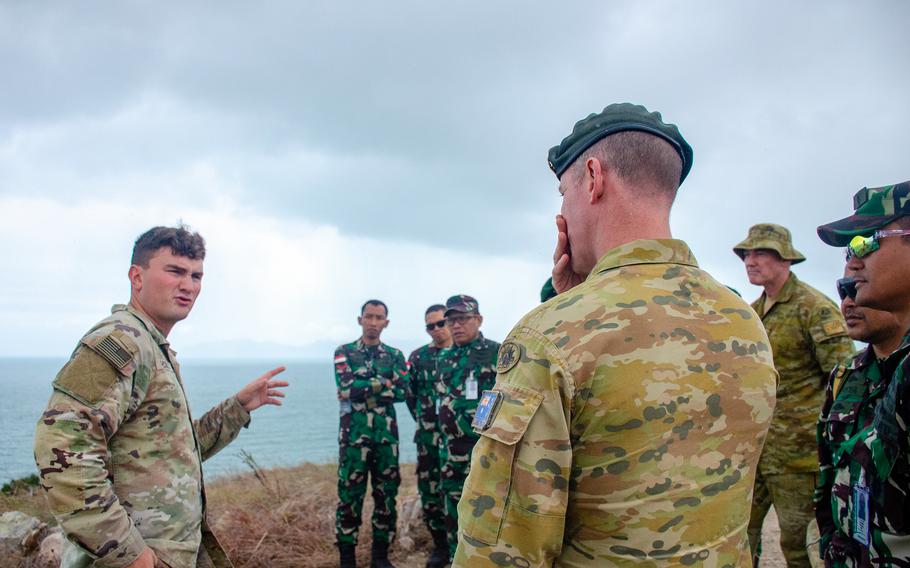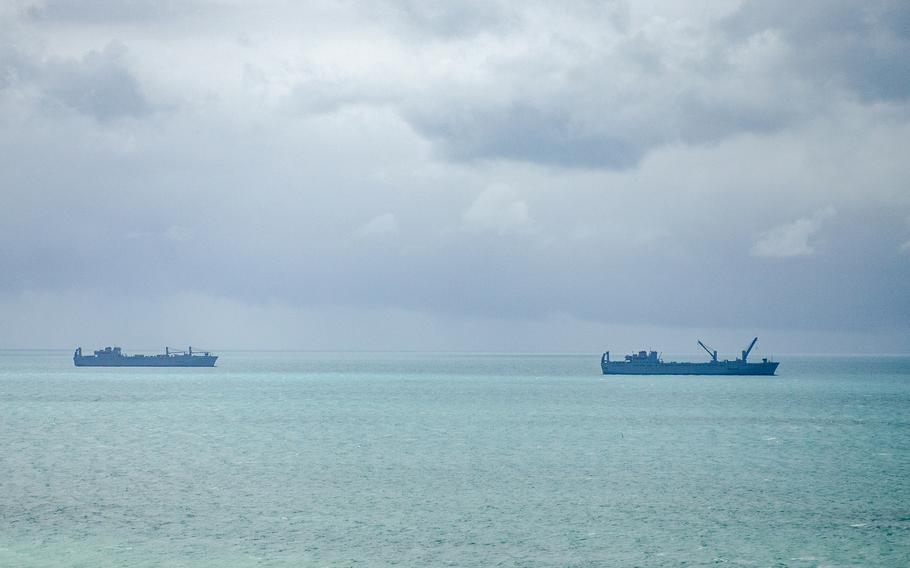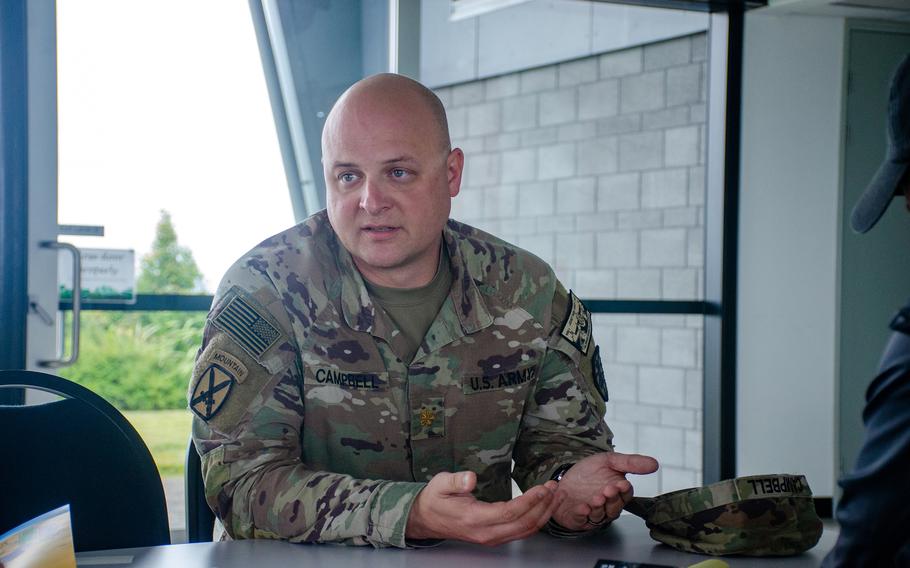
U.S. Army Lt. Jared McCully discusses a modular pier project with Australian and Indonesian troops in Bowen, Australia, July 27, 2023. (Jennessa Davey/Stars and Stripes)
BOWEN, Australia — Two U.S. cargo ships waited patiently about 6 miles off northeastern Australia on Thursday, their crews preparing rapidly for a massive logistics drill that would mark several firsts for the U.S. Army.
Crews aboard the USNS Bob Hope and USNS Fisher were building an 1,800-foot-long modular pier to provide access to remote beaches and enable U.S. forces to land in enemy territory or locations without an available port, according to the lead planner for the project, Army Maj. Ryan Campbell, joint operations officer for 7th Transportation Brigade (Expeditionary).
“In this scenario, we don’t have access to a port. So, essentially, we’re creating one,” he told Stars and Stripes on Thursday.
A useful wartime stratagem, similar over-the-shore logistics projects came in handy during humanitarian missions. The Army used modular piers following the 2010 earthquake in Haiti and again during Operation Deep Freeze 2019, when soldiers delivered supplies to the National Science Foundation at McMurdo Station in Antarctica, Campbell said.

Crews aboard the USNS Bob Hope and USNS Fisher were building an 1,800-foot-long modular pier near Bowen, Australia, July 27, 2023. Such piers provide access to remote beaches and enable U.S. forces to land in enemy territory or locations without an available port. (Jennessa Davey/Stars and Stripes)
The project is a key component of the Army’s joint logistics over-the-shore drill during the Talisman Sabre exercise. The Army plans to unload approximately 1,200 pieces of equipment, including cargo, supplies and vehicles, over a six-day period, said project spokesman Army Lt. Jared McCully, analyst for the brigade.
The Army built a modular pier during this year’s Balikatan exercise in the Philippines, but the Talisman Sabre project will be the longest possible modular pier and the first time a 67-ton M1 Abrams tank moves from ship to shore in that manner, McCully told Stars and Stripes on Thursday.
“With the modular causeway [pier] system, think of it as giant Lego blocks,” he said. “As a kid with Legos, you can build your castle as small or as large as you want,” he said. “We have that operational freedom to adjust and tailor our requirements to beach- and site-specific activities.”
The logistics drill is the largest of its kind ever conducted during peacetime in the Pacific and the first of its kind to be held in Australia, McCully added.
The Australian Defense Force is working alongside the Army, while the U.S. Navy and Coast Guard provide shore and maritime security and ship-to-ship communication.

U.S. Army Maj. Ryan Campbell, joint operations officer for 7th Transportation Brigade (Expeditionary), discusses a modular pier project in Bowen, Australia, July 27, 2023. The project is part of the Talisman Sabre exercise. (Jennessa Davey/Stars and Stripes)
“We’re working very closely to strengthen the partnerships between the United States and Australians - in fact, we have Australian [liaison officers] that work in our joint operation center,” Campbell said. “Even more than that, we rely on our Navy and Coast Guard counterparts to fill those critical roles and gaps that we might not have organic to ourselves.”
Construction on the pier system began July 21 when USNS Fisher first arrived in Australia, followed quickly by USNS Bob Hope. The pier was about 80% complete as of Thursday afternoon, McCully said.
Troops assigned to the project planned to “stab” the beach on either Friday or Saturday, depending on weather and sea conditions, meeting the Army’s goal of a six– to 10-day deployment, he said.